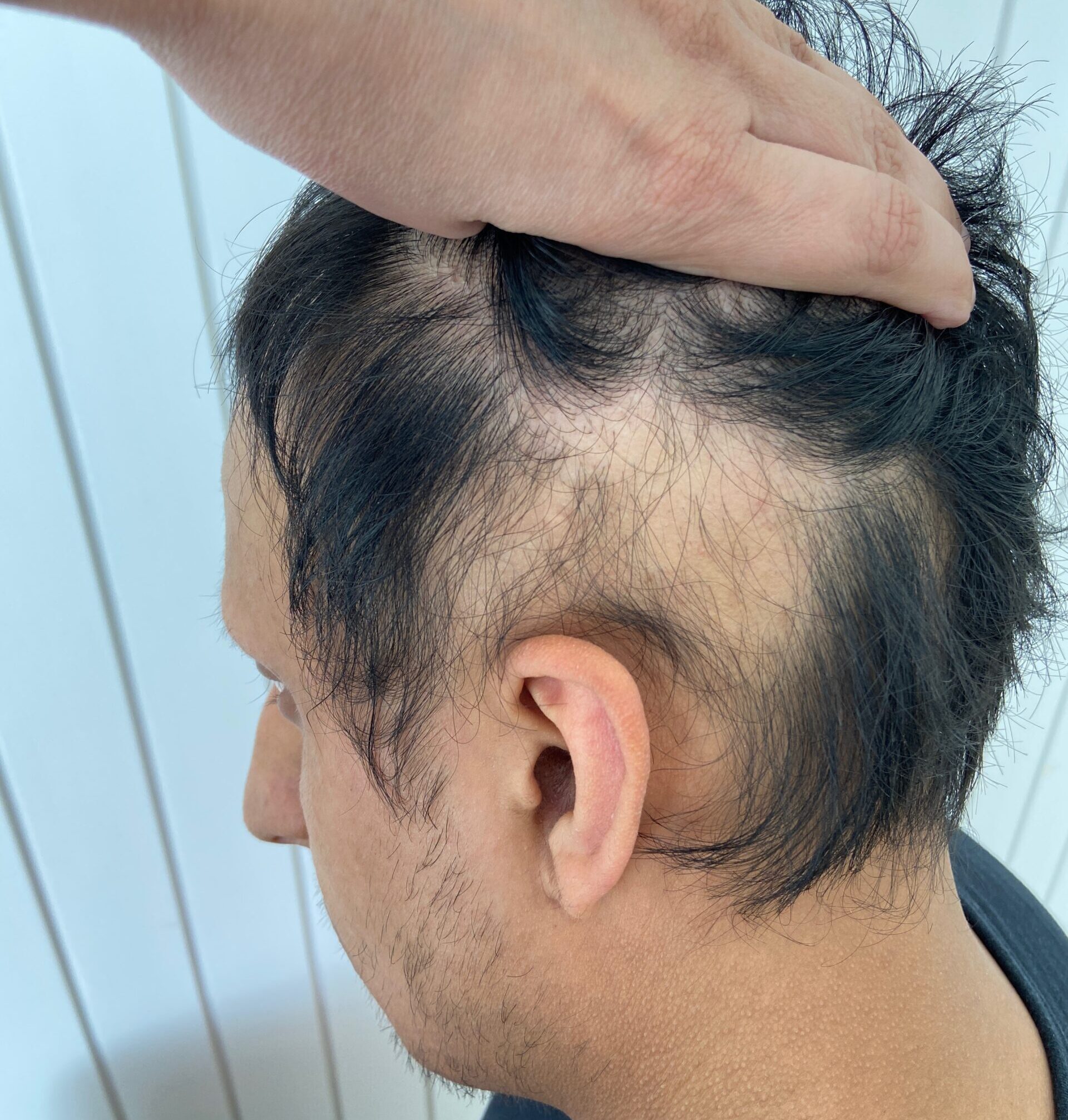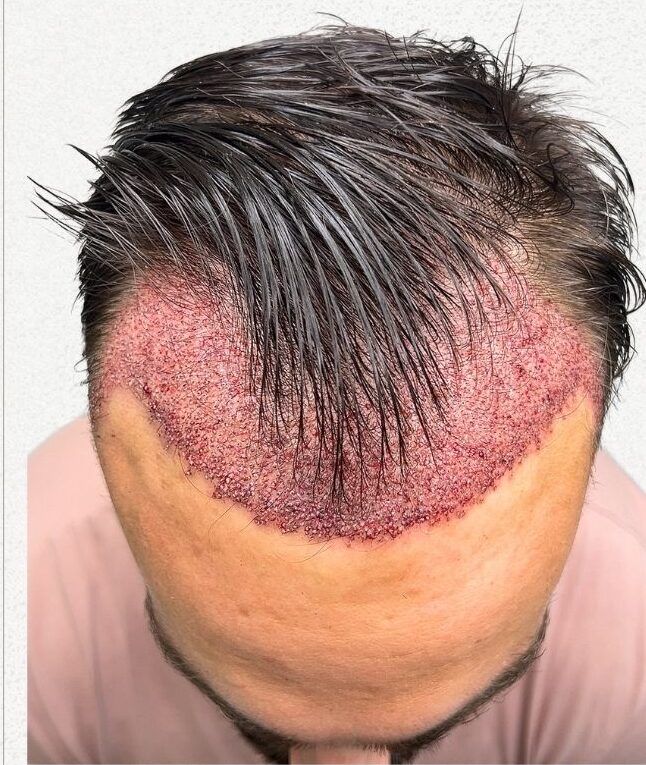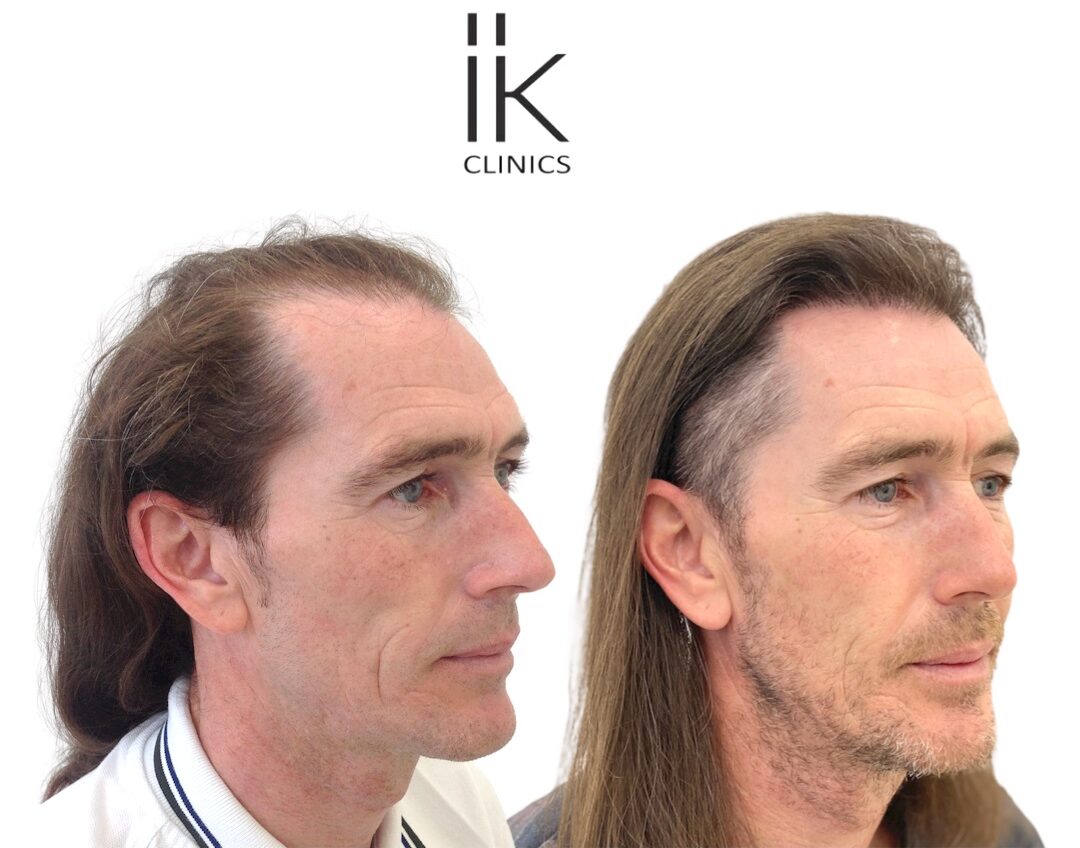If you’ve noticed round patches of hair missing or unexpected thinning, you may be wondering what’s going on and what can be done about it. The good news is that treatments like Platelet-Rich Plasma (PRP) therapy have shown promising results in helping people regain their confidence and hair growth.
In this feature, we’ll take a closer look at what alopecia areata is, how it’s diagnosed, and how PRP therapy could be a game-changer for those struggling with this condition.
What is Alopecia Areata?
Alopecia areata is an autoimmune condition that causes hair loss in small, round patches on the scalp and, in some cases, other parts of the body.
The immune system mistakenly attacks hair follicles, causing them to shrink and stop producing hair. While the exact cause of this condition isn’t fully understood, genetics and environmental factors are believed to play a role.
One of the most challenging aspects of alopecia areata is its unpredictability. Some people experience just a few small patches of hair loss that grow back over time, while others may lose a significant amount of hair, including eyebrows, eyelashes, and body hair.
It can affect anyone, but it is more commonly diagnosed in individuals before the age of 30.
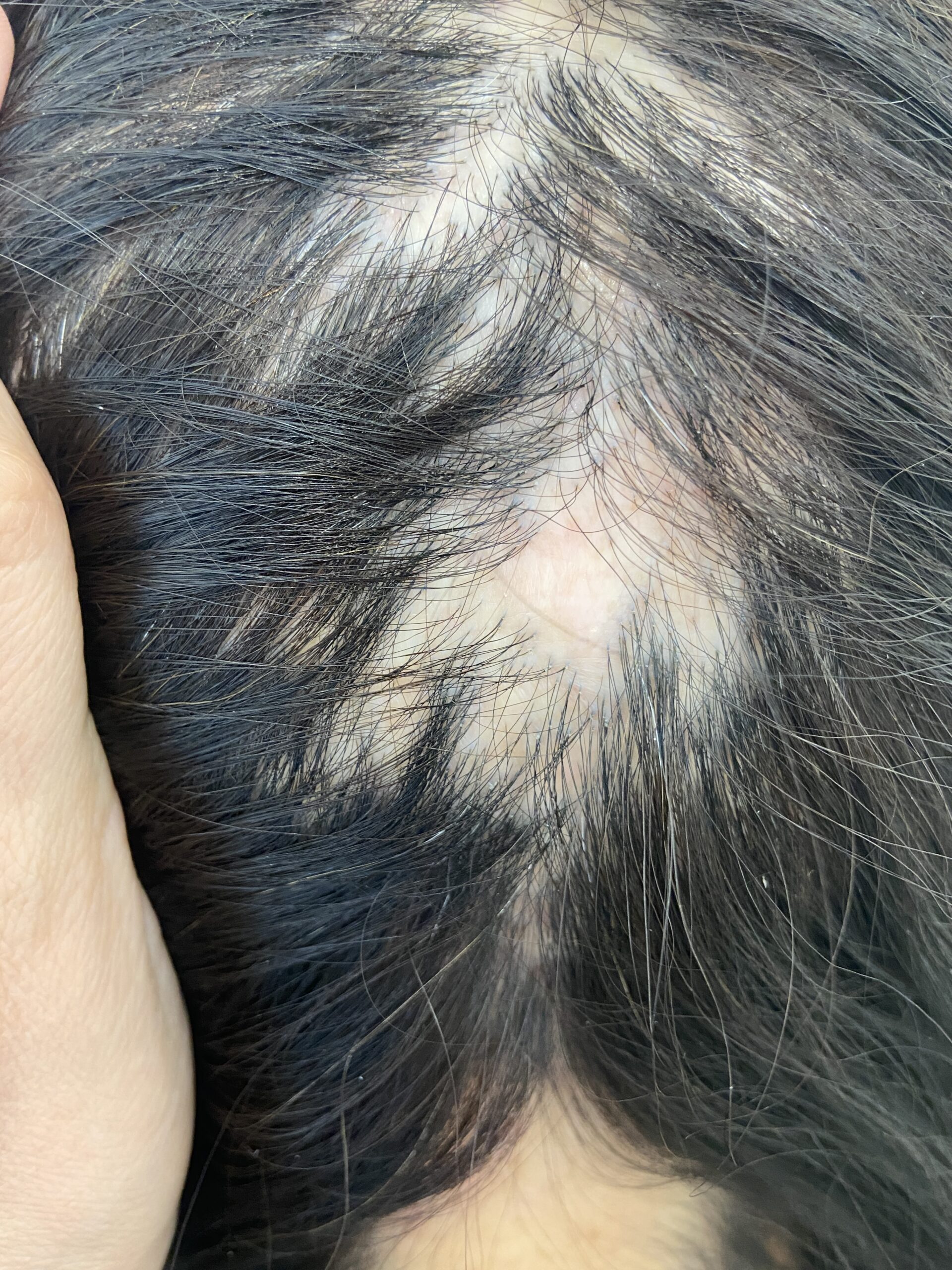
Who Can Be Affected by Alopecia Areata?
Alopecia areata doesn’t discriminate – it can happen to men, women, and even children. However, certain factors may make some people more susceptible:
Genetics: If a close family member has alopecia areata or another autoimmune condition, you may be at higher risk.
Autoimmune Conditions: People with conditions like thyroid disease, vitiligo, or rheumatoid arthritis may be more prone to developing alopecia areata.
Stress and Environment: While not a direct cause, extreme stress or environmental triggers may contribute to the onset or worsening of alopecia areata in some individuals.
How is Alopecia Areata Diagnosed?
If you’re experiencing hair loss and suspect alopecia areata, a visit to a healthcare professional is the best first step. Here’s what to expect during the diagnosis process:
Physical Examination: A dermatologist will typically begin by examining the affected areas on your scalp, beard, or body. The round or oval patches of hair loss, often with short, broken hairs or smooth bald spots, are a common indication of alopecia areata.
Pull Test: Your doctor may gently tug on a few hairs near the affected areas to see how easily they come out. If hair sheds easily, it may indicate active hair loss.
Scalp Biopsy: In some cases, a small sample of the scalp may be taken for further examination under a microscope. This can help rule out other causes of hair loss, such as fungal infections or different autoimmune conditions.
Blood Tests: Since alopecia areata is linked to autoimmune issues, a doctor may recommend blood tests to check for underlying conditions like thyroid disorders or vitamin deficiencies.

How Can PRP Therapy Help with Alopecia Areata?
Once you’ve been diagnosed with alopecia areata, exploring treatment options is the next step.
While there is no permanent cure for the condition, Platelet-Rich Plasma (PRP) therapy is emerging as a promising treatment to help stimulate hair regrowth and improve hair density.
What is PRP Therapy?
PRP therapy is a non-surgical treatment that uses a patient’s own blood to promote healing and hair growth.
The process involves drawing a small amount of blood, spinning it in a centrifuge to separate the platelet-rich plasma, and then injecting the plasma back into the scalp where hair loss has occurred.
How Does PRP Work for Alopecia Areata?
PRP is packed with growth factors that help repair damaged follicles and encourage hair regrowth.
When injected into the scalp, it can:
- Stimulate hair follicles to start producing hair again
- Increase blood flow to the hair follicles, providing essential nutrients
- Reduce inflammation, which may help prevent further hair loss
- Strengthen existing hair, making it thicker and healthier
Is PRP Therapy Effective?
Studies and patient experiences suggest that PRP therapy can be an effective treatment for some people with alopecia areata, particularly those in the early stages of hair loss.
However, results can vary, and multiple sessions are usually required to see significant improvement. Many people notice a reduction in hair loss after just a few treatments, with visible regrowth occurring over a few months.
What to Expect During PRP Treatment
PRP therapy is a straightforward procedure that typically takes about an hour. Here’s what the process looks like:
Blood Draw: A small amount of blood is taken from your arm.
Processing the Blood: The blood is placed in a centrifuge to separate the platelet-rich plasma from other components.
Scalp Injections: The PRP is injected into targeted areas of the scalp using fine needles. The procedure is generally well-tolerated, with minimal discomfort.
Aftercare: There’s no downtime, and you can resume your normal activities immediately. However, avoiding strenuous exercise or excessive sun exposure for a day or two is recommended.
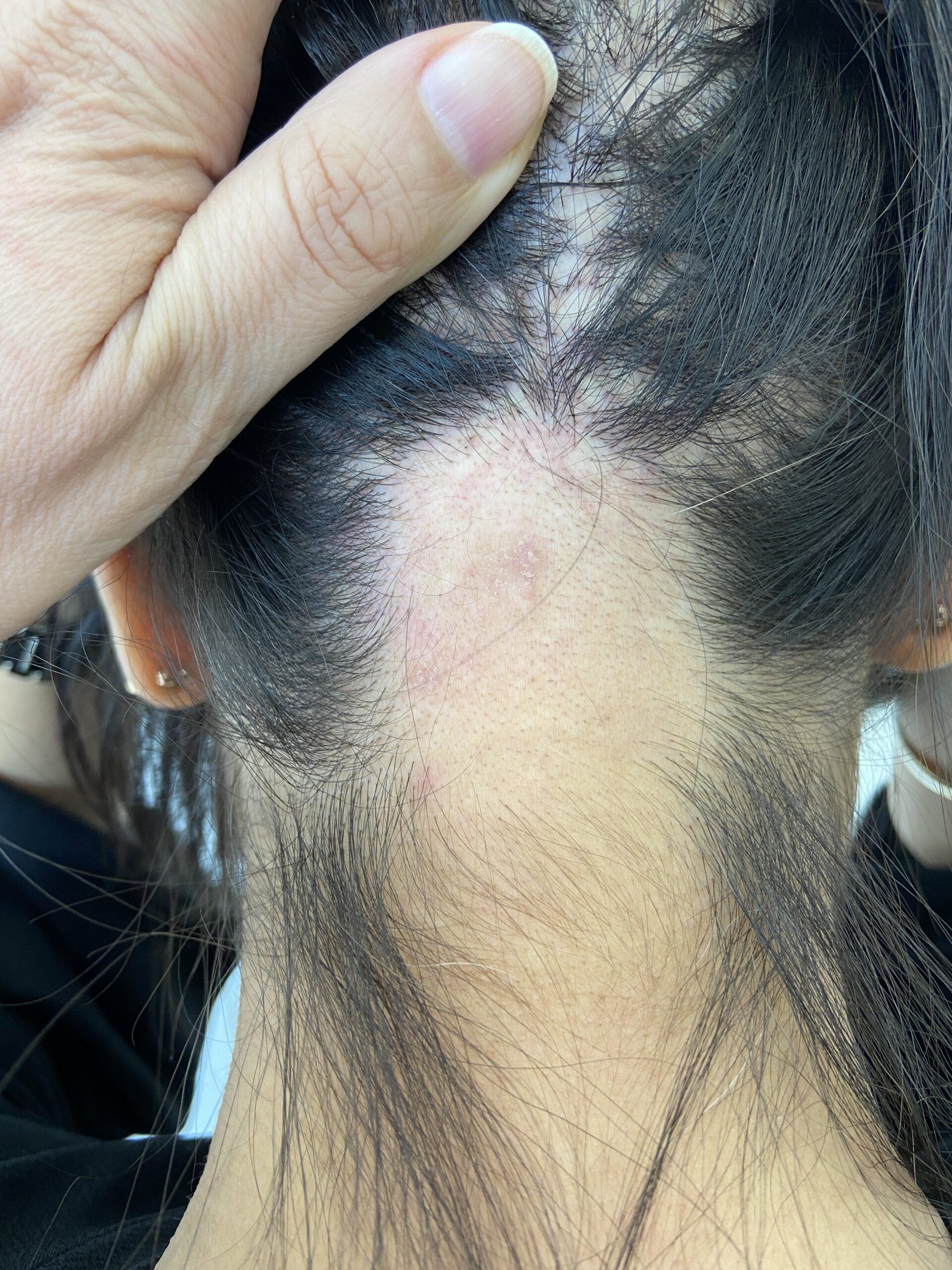
Final Thoughts: Is PRP Right for You?
If you’re dealing with alopecia areata and looking for a non-invasive, natural approach to hair regrowth, PRP therapy may be worth considering.
While it’s not a one-size-fits-all solution, many patients have experienced positive results. Consulting with a qualified specialist, like our team at IK Clinics, can help determine if PRP is the right option for your hair restoration journey.
Alopecia areata can be an emotionally challenging condition, but with the right treatment and support, you can take steps toward regaining confidence and hair health. If you’re ready to explore PRP therapy, reaching out to a trusted clinic can be the first step toward reclaiming your hair and well-being.
About IK Clinics
At IK Clinics, we are proud to stay at the forefront of global hair restoration trends, offering a variety of advanced techniques to meet the diverse needs of our clients. From FUE, PRP to Stem Cell Therapy, we ensure that every client’s treatment is tailored to their personal goals, helping them regain not just their hair but also their confidence.
Interestingly, we don’t just stop at hair restoration treatments, our highly skilled team also offers a range of anti-aging treatments.
